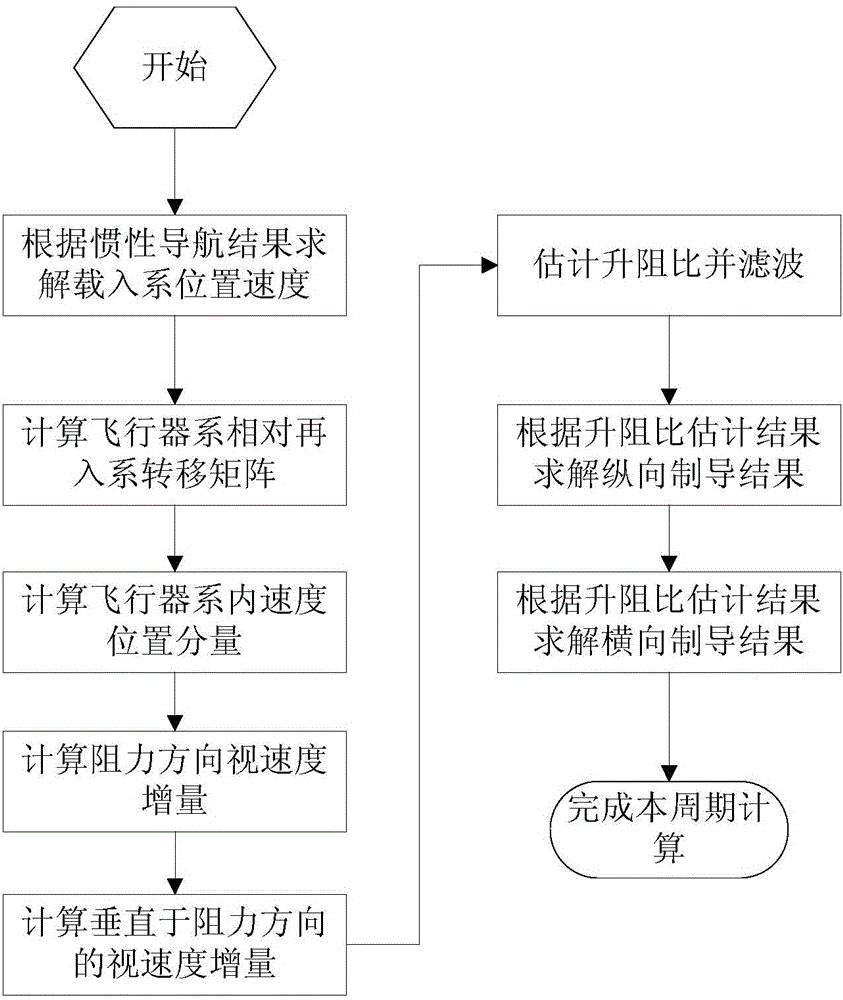Self-adaptive guidance method based on real-time estimation of lift-drag ratio
A lift-to-drag ratio, self-adaptive technology, applied in guidance methods, weapon accessories, offensive equipment, etc., can solve the problems of inability to accurately obtain re-entry guidance, engineering difficulties, and inability to simulate the hypersonic characteristics of the return cabin.
- Summary
- Abstract
- Description
- Claims
- Application Information
AI Technical Summary
Problems solved by technology
Method used
Image
Examples
specific Embodiment
[0084] Take the comparative simulation under four working conditions as an example, where:
[0085] (1) The first working condition is that the lift-to-drag ratio is reduced by 20%, and the lift-to-drag ratio is not estimated during the execution of the guidance law. In this case, the guidance result is: longitudinal error: -23185.700264m, lateral error: 6736.162701m;
[0086] (2) The second working condition is that the lift-to-drag ratio is reduced by 20%, and the lift-to-drag ratio is estimated during the execution of the guidance law. The guidance result is: longitudinal error: -7483.136591m, lateral error: -2248.252857m;
[0087] (3) The third working condition is that the lift-to-drag ratio increases by 20%, and the lift-to-drag ratio is not estimated during the execution of the guidance law. The guidance result is: Guidance result: longitudinal error: 12491.994998m, lateral error: -4658.720627m;
[0088] (4) The fourth working condition is that the lift-to-drag ratio...
PUM
 Login to View More
Login to View More Abstract
Description
Claims
Application Information
 Login to View More
Login to View More - Generate Ideas
- Intellectual Property
- Life Sciences
- Materials
- Tech Scout
- Unparalleled Data Quality
- Higher Quality Content
- 60% Fewer Hallucinations
Browse by: Latest US Patents, China's latest patents, Technical Efficacy Thesaurus, Application Domain, Technology Topic, Popular Technical Reports.
© 2025 PatSnap. All rights reserved.Legal|Privacy policy|Modern Slavery Act Transparency Statement|Sitemap|About US| Contact US: help@patsnap.com



